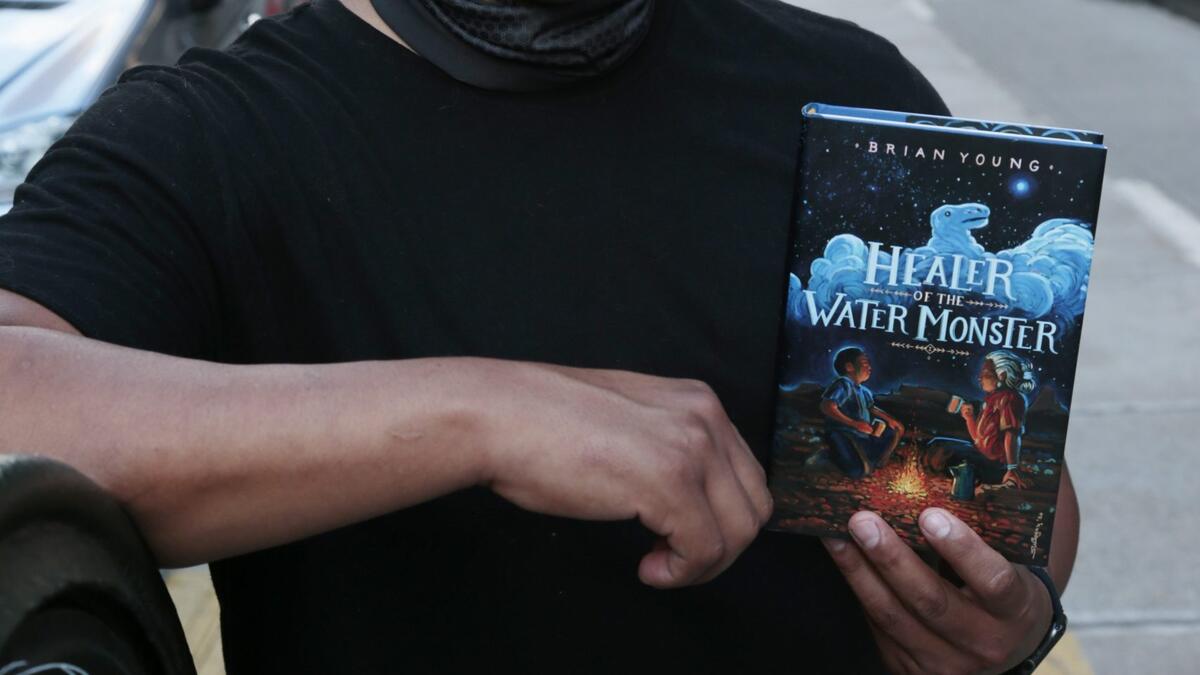Diné author and filmmaker Brian Young visits ASU during Indigenous Culture Week

Diné author and filmmaker Brian Young. Photo courtesy Brian Young
Join acclaimed Diné author and filmmaker Brian Young as he reads from “Healer of the Water Monster" on Friday, April 7, as part of Indigenous Culture Week at Arizona State University.
The event is in partnership with Arizona Humanities and the Labriola National American Indian Data Center. The talk and panel discussion with ASU Indigenous students will run noon to 2 p.m. at Hayden Library on the Tempe campus. The event is free, and registration is now open.
Young also wrote for "Ancestor Approved: Intertribal Stories for Kids" and worked on several short films, including "Tsídii Nááts’íílid – Rainbow Bird" and "A Conversation on Race with Native Americans" for the New York Times short documentary series. He is a recepient of the prestigious Sundance Ford Foundation Fellowship.
“These past few years, Indigenous Speculative Fiction has become more and more visible. As it has become more visible, it has also increasingly become a space where Indigenous people, and authors, have and can imagine or reimagine our contemporary realities from our Indigenous cultural lens. Meaning that our creation stories or cultural stories can and do have meaning in this world,” explained Eric Hardy, program coordinator with the Labriola Center. “Indigenous authors, like Brian, have been doing that work of making Indigenous cultural stories more visible and, at the same time, creating stories where Indigenous youth can see themselves and their cultures in fiction books and creative stories. In partnership with Arizona Humanities, we are hosting Brian to further bring to light that Indigenous stories have meaning in today’s society.”
Young is a graduate of both Yale University, with a bachelor’s degree in film studies, and Columbia University, with a master’s degree in creative fiction writing. He grew up on the Navajo Nation and currently lives in Brooklyn.
Indigenous Culture Week takes place April 2–8 across all campuses at ASU, which are located on the ancestral homeland of the Akimel O’odham (Pima) and Pee Posh (Maricopa) people. The event brings communities together to celebrate and share Indigenous voices from around the world.
The Labriola Center is also celebrating this month: It was dedicated on April 1, 1993, and is currently the only Indigenous-led library center within a doctoral research university in the U.S.
“Starting this month, the Labriola Center will be celebrating its 30th year anniversary throughout the year,” said Alexander Soto, thre center's director. “We will highlight its history throughout. Since 1993, we have emerged as a critical resource for ASU and local and regional tribes.”
There are several opportunities to celebrate this anniversary during April, including a Lo-Fi Study Session on April 20 at Hayden Library along with the Heats n’ Beats Social Gathering on the West campus on the same day.
Future anniversary events are being planned for ASU students, alumni, faculty, staff and community. The Labriola Center will continue to grow and offer opportunities that celebrate and critically engage with American Indian and Indigenous scholarly works and creative writing on the Tempe campus and West campus.
“As its first Indigenous director, myself and all Indigenous staff are pleased to share the benefits of Indigenous librarianship with the community this year and for the next 30 years,” added Soto. “We believe Indigenous libraries equal cultural resilience.”
More Arts, humanities and education

Award-winning playwright shares her scriptwriting process with ASU students
Actions speak louder than words. That’s why award-winning playwright Y York is workshopping her latest play, "Becoming…

Exceeding great expectations in downtown Mesa
Anyone visiting downtown Mesa over the past couple of years has a lot to rave about: The bevy of restaurants, unique local shops…

Upcoming exhibition brings experimental art and more to the West Valley campus
Ask Tra Bouscaren how he got into art and his answer is simple.“Art saved my life when I was 19,” he says. “I was in a…

